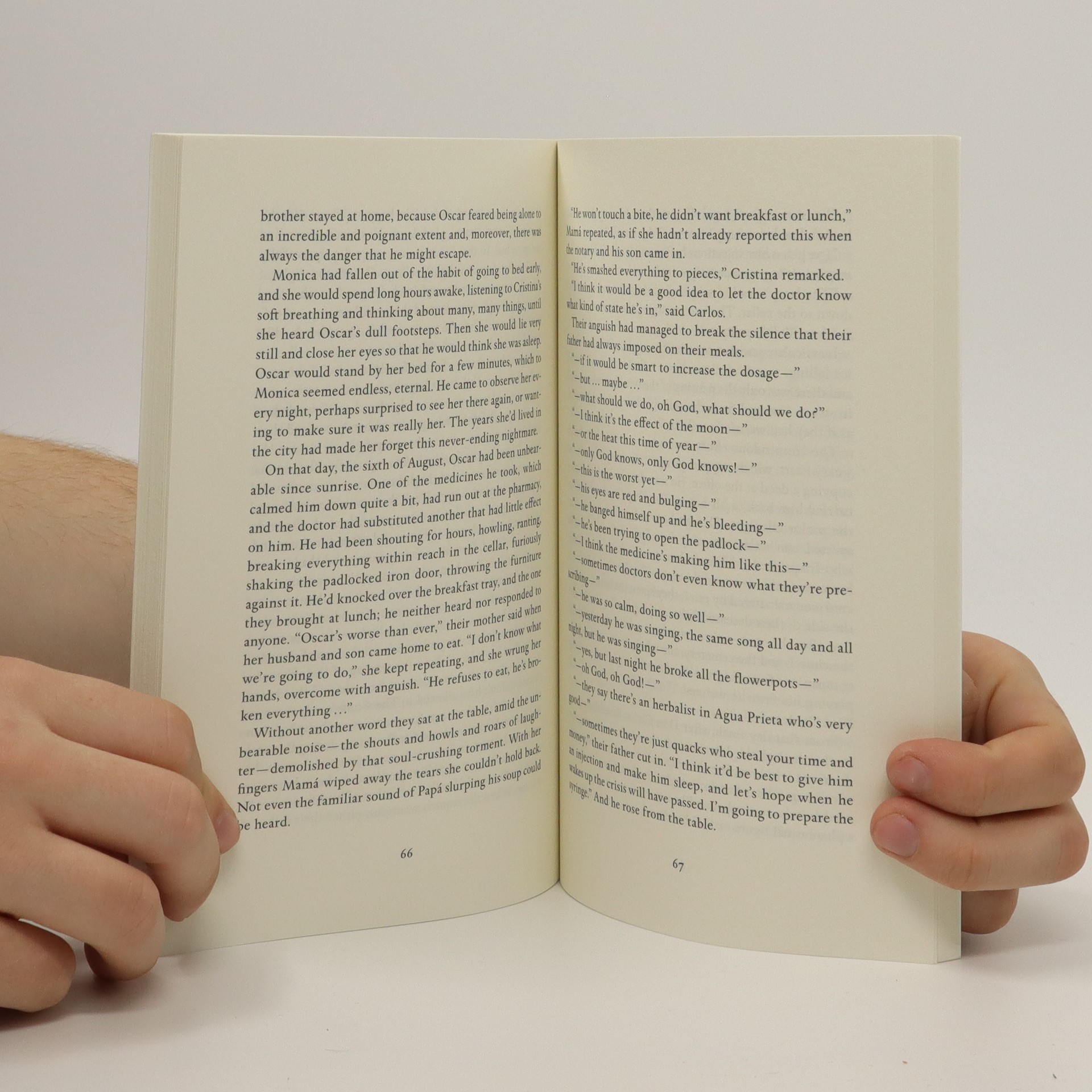
At the end of the Andersen tale, the girl must pay for her disobedience with death. What is it that triggers Carmen’s outburst? Is it the frequent diets to maintain her figure that her mother frets about? The student protests on the streets of Mexico City and the Mexican government’s oppressive reprisals, which her father and brother bicker over? Her frenetic social life? Or is it the strange, repressed sexual relationship with Luciano that we catch distorted glimpses of? The hallucinatory dream scene at the heart of the story features a red carnation that forces Carmen to dance, like a contemporary version of Hans Christian Andersen’s fairy tale “The Red Shoes” and the “wicked” girl they compel to dance. It’s up to the reader to piece together what went on behind the scenes. It almost reads like a one-act play, told mainly through dialogue, movement, and gesture, with all the action taking place in a single room. While she is always skilled at following the internal twists and turns of her characters’ minds, this particular story has a striking externality. Like many of Dávila’s stories, “The Breakfast” is about the eruption of the chaotic, frightening things that roil beneath the controlled surface of everyday life. And the other is her dry, black sense of humor. One is her knack for using well-placed details and offhand glimpses to depict the social milieux of Mexico - in this case, the breakfast table of an upper-middle-class family in the capital. But it also showcases two other qualities that Dávila is less famous for. Among them, “The Breakfast” is a characteristically dark shocker.

In it we translated a selection of Dávila’s unsettling stories from throughout her career. “The Breakfast,” originally published in 1961, is taken from The Houseguest and Other Stories - Dávila’s first full-length book to be published in English.

The august gatekeepers of Mexican literature praise her as a master, while young literary aficionados and darks (goths) who weren’t even born yet when she published most of her work line up eagerly for her autograph.

Maybe this is part of why her stories seem to have a timeless quality - most of them speak to us from decades ago, but Dávila herself is still very much alive, and her edgy, uncanny work remains fresh. Only now is Mexico finally rediscovering her work and falling in love with it again. But then she sank from sight, hardly producing any new work after 1977. From the 1950s to the 1970s she published delicate, moody poems and disturbing short stories that are written with precision and filled with nightmarish occurrences and unbalanced psyches.

Recommended by Audrey Harris & Matt GleesonĪmparo Dávila, now 90 years old, is something of a lost-and-found figure in Mexico. Don’t Bring Nightmares To the Breakfast Table


 0 kommentar(er)
0 kommentar(er)
